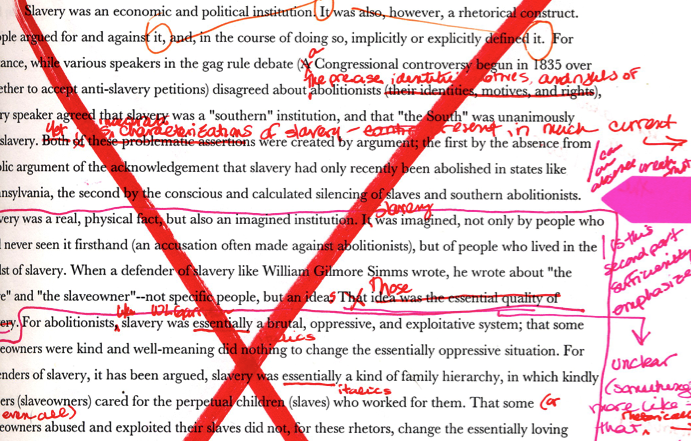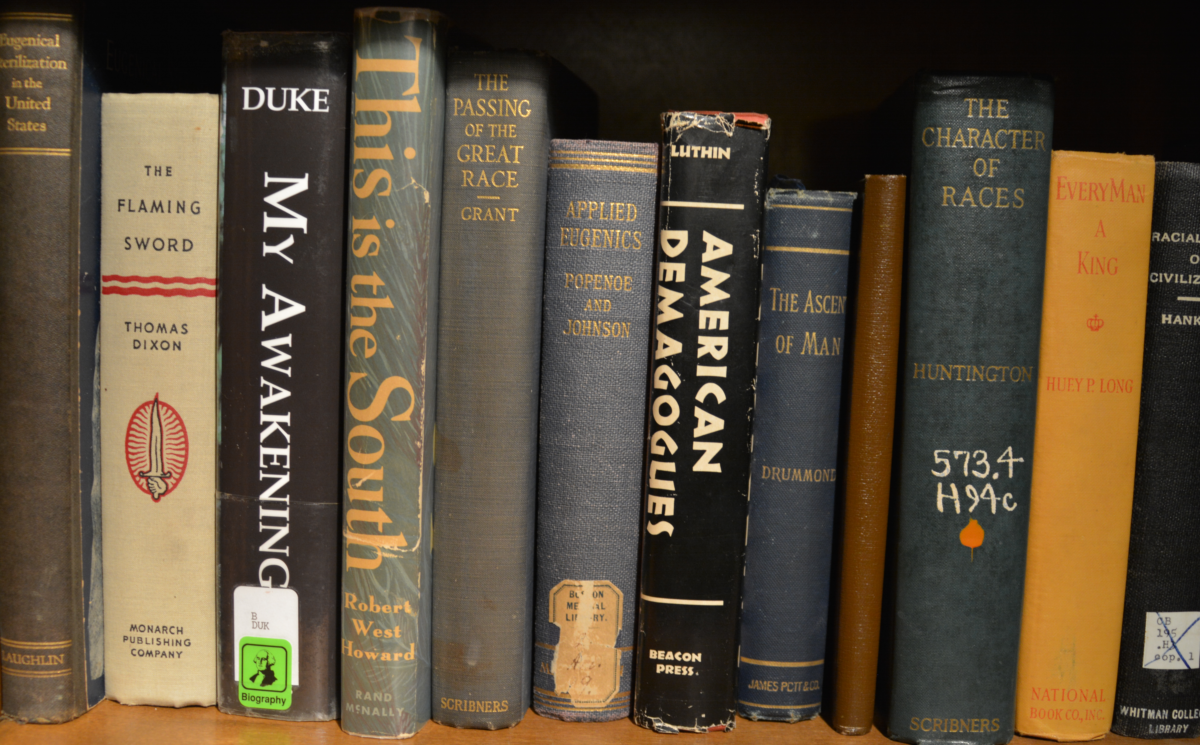
Because I direct the University Writing Center, and teach and write about the teaching of writing, people assume, correctly, that I care a lot about plagiarism. Because I care a lot about plagiarism, a lot of people assume that I advocate the use of plagiarism-detection software. I don’t.
Plagiarism-detection software is so attractive because it appeals to several misconceptions about plagiarism, what it is, why students engage in it, and how to prevent it. Plagiarism is the consequence of incorrect citation, but not all instances of incorrect citation are plagiarism. There are a lot of ways of citing that, at least by some disciplines, are incorrect, including submitting work that
-
- appropriates someone else’s citations;
- was entirely written by someone else;
- has large uncited portions from another source in which words are changed here and there;
- paraphrases source material but doesn’t cite it;
- has a substantial portion verbatim from an uncited source;
- cites the sources of material, but not in the correct format;
- uses ideas, but not language, from an un-cited source;
- fails to punctuate correctly (so that quoted material is presented as though it’s paraphrased).
These examples are incorrect (although not in all disciplines—in some fields, such as law, appropriating a set of citations is common), but not everyone would call all of them plagiarism (and that third one is often taught as not plagiarism, although most colleges consider it so).
Since there are disciplinary differences, and since it’s not useful to collapse very different practices into one term, teachers need to tell their students what plagiarism is, and what the penalties are. Those penalties vary from class to class, as they should.
Thus, one problem with plagiarism-detection software is that it is often marketed as though it makes the determination of plagiarism for the teacher. It shouldn’t. It can’t.
A lot of faculty assume that college students know what plagiarism is, and they therefore assume that plagiarism is always deliberate. But not all students do know what plagiarism is, because, for instance, not all college teachers use the term to mean the same thing. Some only use plagiarism for instances in which there is no citation at all, whereas some include bungled citation. Unfortunately, there are still many students who have been told (perhaps by teachers, perhaps by parents or friends) that changing every third word makes it not plagiarism. College faculty often assume that this myth was dispelled in college first year composition classes, but many students don’t take first-year composition in a college.
Loosely, there are four different ways that students end up with material that fits the highest standards of plagiarism. There are students who know that they are plagiarizing and choose to do it in ways that they believe will be hard to trace—such as by buying a paper from a paper mill, paying someone else to write an original paper, or turning in a paper that another student has given them. There are students who deliberately cut and paste material from sources, spending their time tweaking the material to make it passable. They know they are plagiarizing, and hope to make it undetectable. These two kinds of plagiarists are deliberate and, let’s be blunt, malevolent. They think that the rules about plagiarism don’t apply to them. They are narcissistic jerks.
There are students who have poor research strategies, such as cutting and pasting into their paper file material from the sources they want to use. Under such circumstances, it’s easy to lose track of what was direct quotation, so these students may not realize they’ve plagiarized. They may think they haven’t. The fourth is what Rebecca Moore Howard calls “patchwriting,” in which authors take phrases from various sources, perhaps even following the original syntax. Patchwriting happens for various reasons, ranging from bad time management (not enough time to digest the source material) to unfamiliarity with the content (if we are writing about a topic we don’t understand, we might not be able to find synonyms, and so take phrases from the original), or even thinking that changing a word here and there is sufficient (that is, the myth of changing every third word).
As a teacher, I am most interested in what students’ plagiarism means for my teaching. If I’m doing a good job of writing assignments, students shouldn’t be able to get a passing grade doing that first kind of plagiarism. If I have students who are doing the second, I need to give them a poor grade, make them rewrite the paper, or otherwise recognize the problem. If they’re doing the third, I need to work on teaching writing processes. If they’re doing the fourth, I’ve done a lousy job teaching content, or a lousy job teaching about citation practices.
Does plagiarism-detection software help me learn from students’ plagiarism?
There is a world in which it might—I’ll get to that at the end—but this is not that world. Instead, it is a world in which plagiarism-detection software helps malevolent plagiarism. It does so because it tells teachers that plagiarism-detection software can teach students how to keep from plagiarizing. It tells teachers they won’t have to teach about plagiarism or think about it as they grade papers. We still have to do both, even with the best plagiarism-detection software.
Students who are plagiarizing, and know they are, find plagiarism-detection software very helpful. They can submit and resubmit a paper, tweaking their language, until they can find a version that makes the software happy. Plagiarism-detection software is a kind gift to students who are deliberately plagiarizing.
Plagiarism-detection software sometimes does (but usually doesn’t) catch the third and fourth kind of plagiarism, the kind that is an opportunity for a useful intervention on my part. I can only notice those sorts of plagiarism if I know the source material the students are using for their papers, and I’m familiar with the content. (This is one of many reasons I avoid “open” assignments.)
Plagiarism-detection software marketing claims that teachers can essentially delegate the question of plagiarism to them. It can’t. It’s best at that third sort of plagiarism, and second best (but not great) at the fourth.
The problem is that it not only helps students who are deliberately engaged in plagiarism, but that the marketing is that teachers can rely on plagiarism to make teaching decisions for them, when it actually can’t.
I lived in a neighborhood that had no sidewalks, and was a relatively recent development, so there were a lot of people walking on the road with dogs and strollers, and jerks who drove much too fast. We needed to get people to drive more carefully and more slowly. We had a community meeting with some police officers at which a lot of residents argued that we should put up “Slow Children At Play” signs.
They thought that telling people they should do something was the same as making them do it.
[This is the dominant model of communication—with disastrous effects in terms of political deliberation and education reforms, but that’s a subject for different posts.]
Guess what. People who drive too fast do not, in fact, suddenly drive more carefully when they are informed there are children. The worst drivers in our neighborhood lived there. They had children. They could see children on the road. They thought they were such good drivers that they could drive as fast as they wanted and still be responsible drivers. They were narcissist jerks who thought the rules didn’t apply to them.
So, putting up those signs didn’t change those actually irresponsible drivers who slid into the bike line, drove too fast, multi-tasked. It didn’t make them any more responsible. They continued to drive like narcissist jerks to whom rules didn’t really apply.
But, as the police officers said, when there were “Slow Children At Play” signs in a neighborhood, then parents assumed that people would drive well, and therefore weren’t as careful as they needed to be given the narcissist jerks in the neighborhood. “Slow Children At Play” signage makes parents less careful, while not changing the behavior of dangerous drivers.
My main problem with plagiarism-detection software is that it is like putting up “Slow Children At Play” signs. It doesn’t really stop the troubling behavior, but it makes teachers think it has. Narcissist jerks can plagiarize even better, and teachers teach less well.
Universities are, and should be, about teaching people to write in complicated ways about complicated situations. That isn’t done on the cheap. It’s done by having students interact directly, and personally, with a content-knowledgeable person who reads and thinks about their work. Plagiarism-detection software could be used by teachers as one way of alerting them to two kinds of citation issues, but it can’t replace careful grading. Plagiarism software-detection software is attractive because it appears to take a time-intensive aspect of teaching writing—determining if students are using their sources responsibly—and solving it technologically.
It doesn’t.
